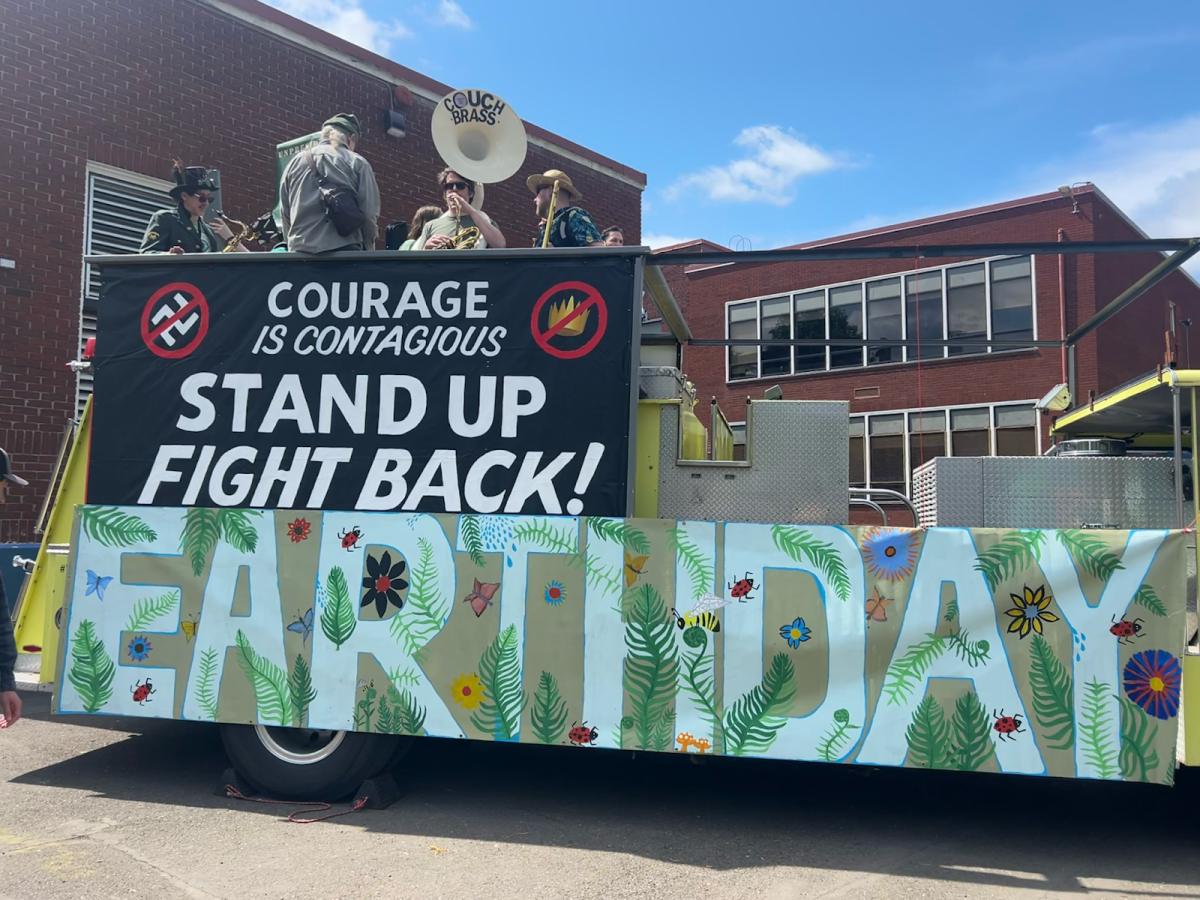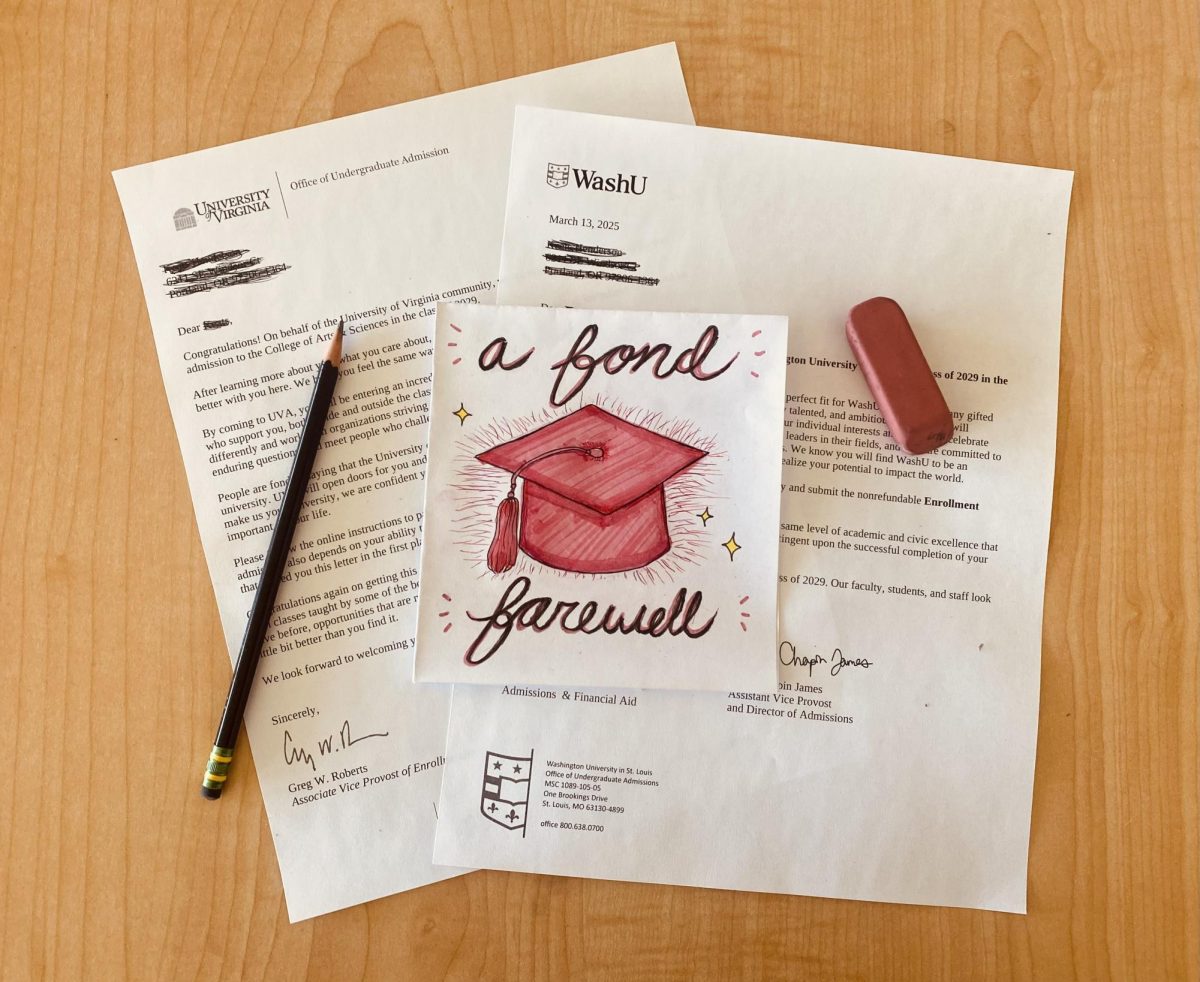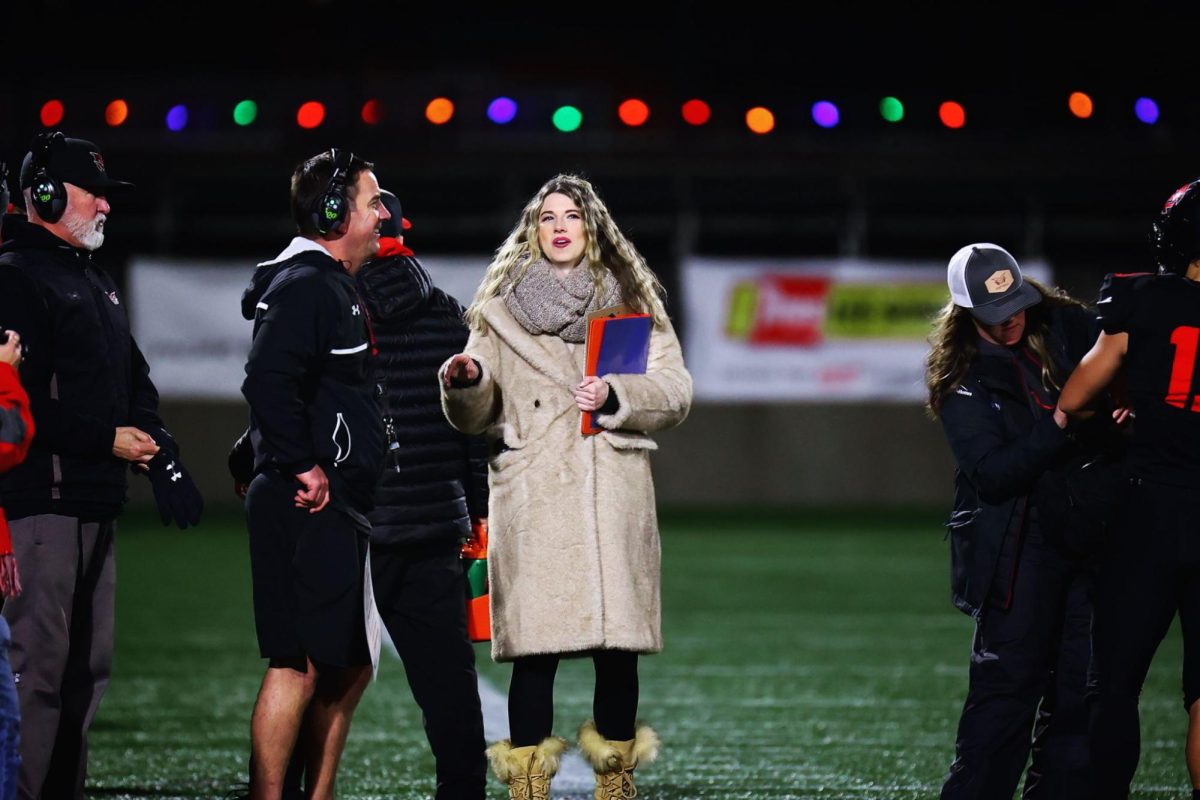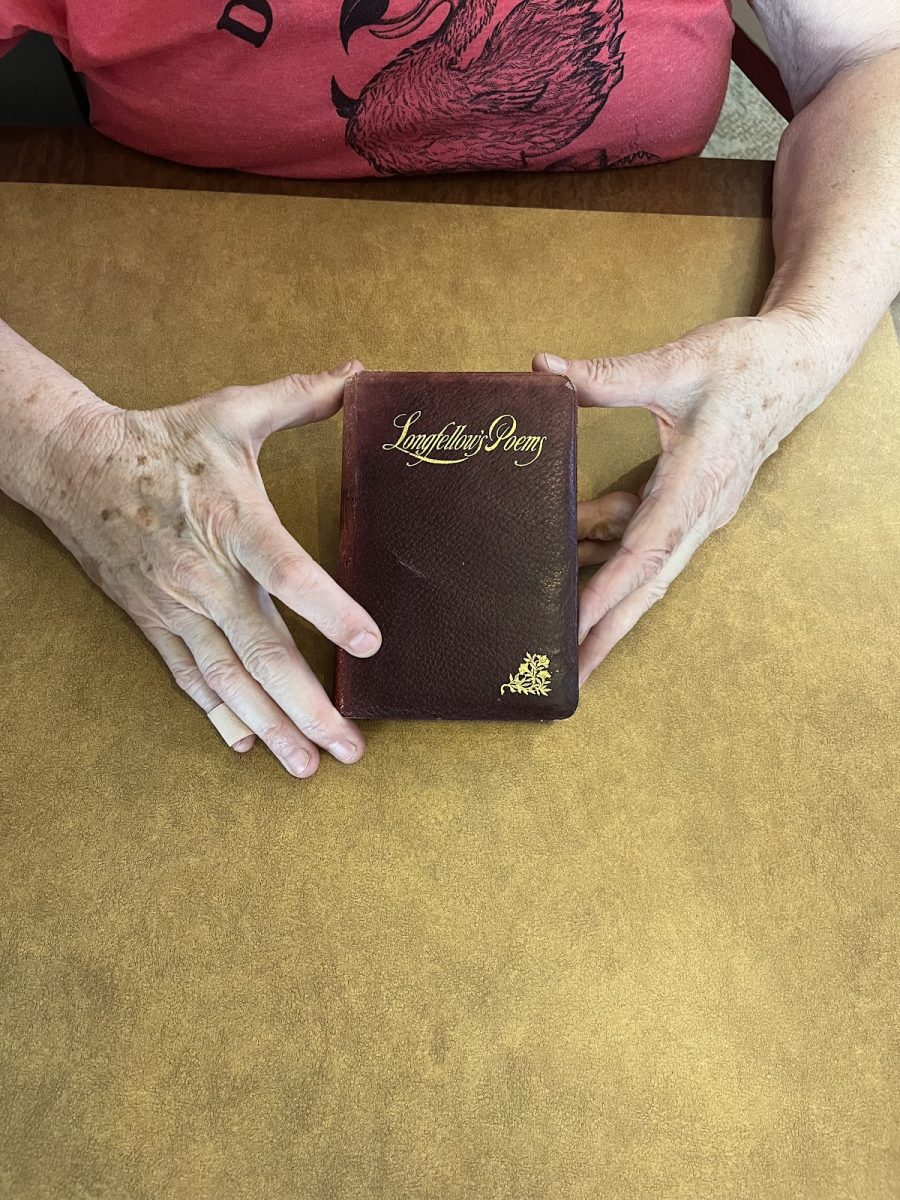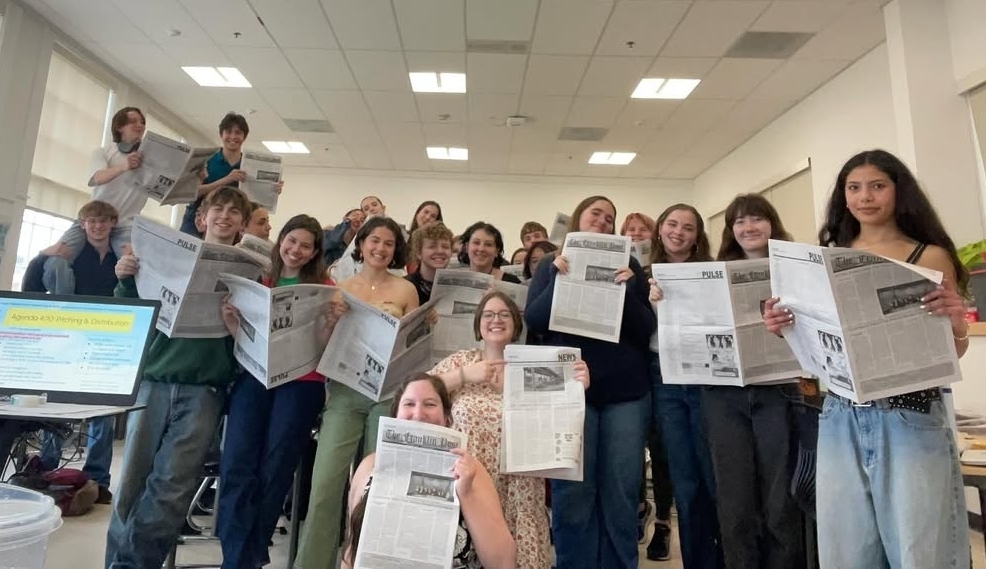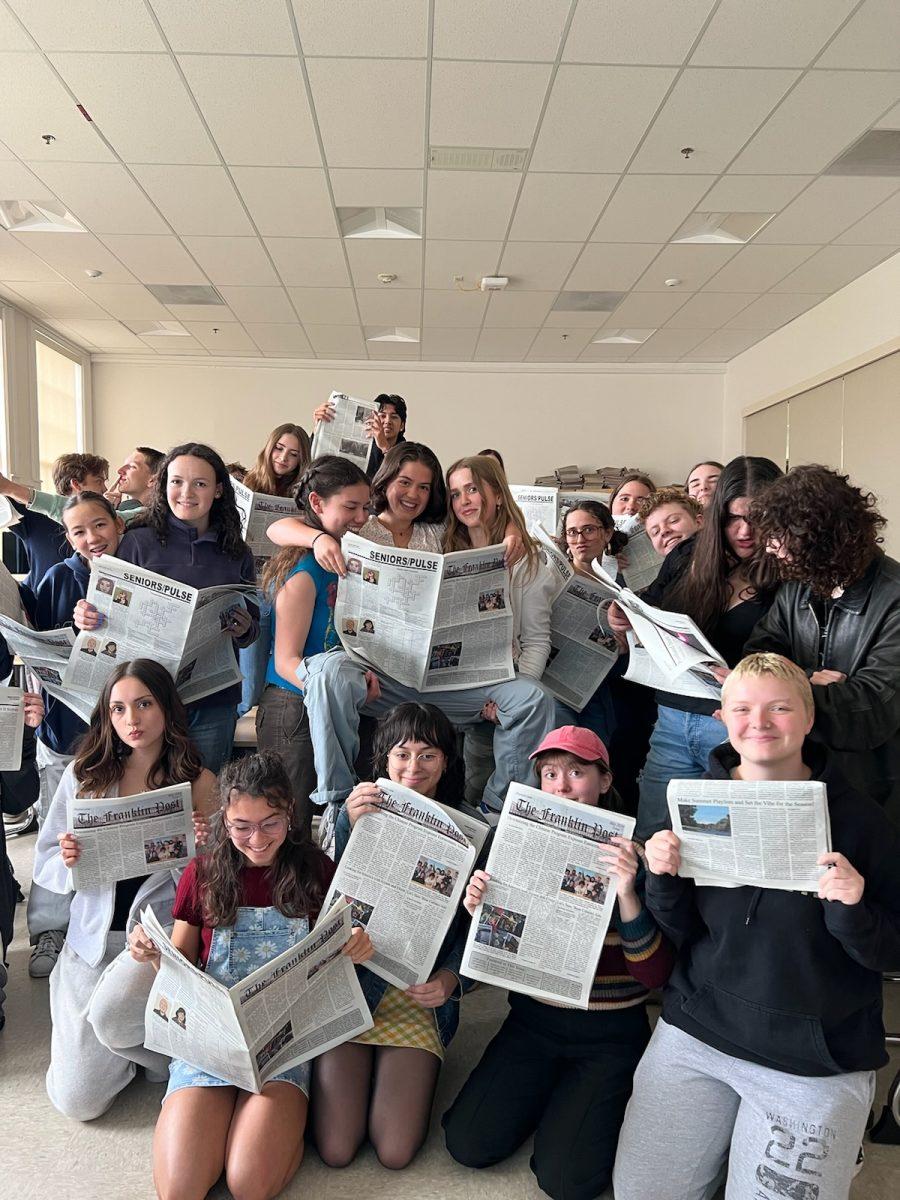
Everybody has heard of Mozart and Beethoven, even those who don’t regularly listen to classical music. Somecan name a few more composers off the top of their head, but chances are that all of them are white men. As with many things from history, classical music representation is lacking in diversity. The composers who get the most recognition are rich white men, while other brilliant writers seem to have been largely forgotten.
This form of music still gains a following among younger generations, no matter how many hundreds of years old it can be. As Opal Rockett (10), Franklin student and cellist in AP Music Theory says, “It’s a form that takes a lot of time to really listen to and understand. More songs will be 30 minutes long whereas pop songs will be like two minutes. You really have to really pay attention to it more and I feel like some songs go deeper, [and take] you to a more real spot.” As time moves forward and our world strives to stop the damage it’s doing to people who are seen as somehow “less than,” it’s important for people to see reflections of themselves in the entertainment they consume. “We don’t really realize how much information is coming towards us but everything influences us in these non direct ways,” Rockett explains, “and I feel like, if you have representation, more people can see that. With entertainment especially, people see a lot more validation for their own lived experiences and it gives them an example for which they can go by so they can be like ‘Oh, okay, a person like me is doing this, I also am interested in this and they’re showing me that I can also have potential.’”
This artform doesn’t just belong to rich white men. The fanbase is growing, as people can now access music over the internet without having to be wealthy enough to attend concerts, and the musicians who interpret and perform classical music are growing more diverse. In the present, as well as throughout history, there have been multitudes of BIPOC, LGBTQ+, female, disabled composers, and many more from other historically marginalized communities. These are the stories of just eight:
- Joseph Bologne (1745-1799)
Bologne was a prolific composer, violinist, conductor, and swordsman during the Classical period. Born on the island of Guadeloupe in 1745 to a plantation owner and his enslaved partner, Bologne moved to France at a young age with his father. In his early life, he was given private lessons for fencing and music. He became so good at fencing that when his father became personal assistant to King Louis XV and Bologne was still a teenager, he was added to the king’s guard and given the title Chevalier de Saint-Georges. 15 years later, Bologne made his musical debut playing two violin concertos of his own creation.
When the French Revolution befell his country, Bologne took to fighting for the republic and even was given command of his own cavalry. Later, however, he was imprisoned for his ties with the King. Upon release, he turned back to music, conducting his own orchestra, Le Cercle de l’Harmonie, until his death in 1799.
Bologne was a greatly talented person in several areas and gained respect from many with his charm. Aside from his flattering personality, if you challenged him to a duel, it was a sure path to defeat. Still, he fought many challenges for being a person of color in pre-revolutionary France. In the midst of his music career, Bologne was offered the position of artistic director for the Paris Opera but was eventually denied the post when four of the leading singers protested against having to work with someone of mixed race. He was also often referred to as “the black Mozart.” Cal Curtis (10), a student who plays violin, says “I find [this] quite concerning… It was Saint-Georges who inspired Mozart yet the nickname inferred that his music was alike to Mozart whereas it was literally the other way around. It was said that Mozart stole from Saint-George’s music, and was pretty jealous of him at the time.”
- Dame Ethel Smyth (1858-1944)
Smyth grew up in Victorian England, where her gender held her back in many aspects of life. Nevertheless, she fought to get an education in her early life and, later, to be able to sustain herself with a job different from what was generally available to women at the time. The beginnings of her life, unfortunately, is not very well documented. Smyth studied music at the Leipzig Conservatory where she met the likes of Tchaikovsky, Clara Schumann, and Brahams. Her compositions were numerous, many written for chamber groups and voice.
This composer was also a committed member of the women’s suffrage movement in England. Her composition, “The March of the Women,” became the official anthem for the Women’s Social and Political Union and her pieces gained fame throughout the movement. She once wound up in prison for throwing an expertly aimed rock through a window in Parliament, which happened to smash into the office of a particular official who had frequently demonstrated negative views about women.
Another thing that was remarkable for her time is that Smyth never married. She did have many relationships, however, most of them openly with other women. Her most enduring relationship was long-distance, carried out via letter, and lasted many years. Near the end of her life, when Smyth grew tired of composing, she turned to the writing of memoirs and essays rather than musical notes, proving to have a powerful command of written language as well as sound.
- Florence Price (1887-1953)
Price proved to be a strong and determined figure as she carved out her place in the world during the Jim Crow era. She grew up in Little Rock, Arkansas, learning piano from her mother. Her first recital was at four and her first published piece was released at 11. Throughout her childhood, Price attended a poorly funded school for Black students as segregation in schools was still very prevalent. Here she learned her passion for literature and graduated as valedictorian when she was only 14. After a few years, Price moved to study at the New England Conservatory, a primarily White college. There she pretended to be of Mexican descent, per the advice of her mother, in hopes she wouldn’t face as much of the blatant hatred and violence directed so openly towards African Americans at the time. Upon graduating the conservatory, she had earned a bachelor’s degree with a double major in piano and organ performance.
In her compositions, Price often included elements of African-American folk music and told stories about the lives of slaves such as in her pieces, “The Land O’Cotton” and “Corn Tassels”. Price’s work, “Symphony No. 1 in E Major,”was the first symphony by an African American woman to be performed by a major orchestra. She also taught music both in various schools and in private lessons. Throughout her career, she was refused many teaching jobs for her race and once had to leave a position because of a violent encounter that culminated in a lynching. Despite the hardships, Florence Price produced many remarkable works of music in her time.
- Kaikhosru Sharpurji Sorabji (1892-1988)
Sorabji’s career was nothing if not unique. He was born near London to his Sicilian/Spanish mother and Parsi father. Born Leon Dudley, Sorabji changed his name as he felt more connection to his Parsi heritage than any of the European influences around him. This was something he was bullied for at school, even by the tutors who wanted to make him “more English.” Sorabji’s mother taught him piano from a young age and his first occupation was performing as a concert pianist. When he grew tired of playing, he became a music critic notorious for sarcastic and witty reviews. When that got old, he finally turned to composing, becoming known for his lengthy and dissonant pieces. Sorabji wrote the longest non-repetitive piano piece with a run time of five hours: “Opus Clavisembalisticum,” the longest excerpt performed of which was 90 minutes straight.
Sorabji was not a fan of the spreading of his work, and he was known to have walked out halfway through at least two of his premiers. In fact, he put in place what became known as “The Ban”: restrictions on the playing and publication of his work. He was always a very private and secluded person, feeling alienated by his mixed-race heritage and homosexuality, and now he kept his music private as well, not allowing anyone to perform it for years. It took much persuasion by friends and fellow musicians to convince him to allow a small group of people to play his work. Once it was achieved, however, it continued: the ban was lifted and his music is now out there for us to enjoy. Sorabji spent the last 35 years of his life with his partner Reginald Norman Best, and they are said to have their ashes buried side by side.
- Joaquín Rodrigo (1901-1999)
Rodrigo was born on the Mediterranean coast of Spain in Sagunto. He, too, showed an interest in music during his early life. At the age of three, he contracted diphtheria, a bacterial infection which was common in children at the time, and though he recovered, his eyesight did not. The Rodrigo family moved to Valencia where the future composer began attending a school for blind children. Around the same time, he began to receive music lessons from teachers at the local Valencia Conservatoire, even though he never officially enrolled there. Before long, he had become a brilliant pianist and was writing his own songs at the age of 19. Sometimes they would be written in braille and sometimes his assistant would transcribe them; “Rafael lent me the eyes I did not have,” Rodrigo once said.
It was still not until he moved to France that Rodrigo received official music training. Here, he made many lifelong friends including other musicians and even his future wife, a pianist from Turkey. He continued writing wonderfully intricate pieces for classical guitar and married Victoria Kamhi in 1933. Three years later, when the Spanish Civil War began, the pair found themselves hiding out in the Black Forest in Germany, giving lessons for both music and the Spanish language. After the war ended, Rodrigo spent the rest of his life as a professor of music at Madrid University.
- Fanny Mendelssohn (1805-1847)
Mendelssohn is a well-known name, but most would recognize it in reference to the composer Felix Mendelssohn, brother of Fanny Mendelssohn. The two were born in Berlin, grew up under the same roof, and had the same music teachers. They were both even composing from a young age. Fanny was a great piano player, Felix often confessing that she was far better than him. She was said to have memorized the entirety of Bach’s “Well Tempered Clavier” by the time she was 13. Fanny served as her brother’s musical advisor until he left home.
Later in life, she married and moved to Italy. It only lasted a short while, though, before she had to return to Berlin to look after the family home when her mother died. As head of the Mendelssohn household, Fanny would often organize local concerts in the community and sometimes perform in them. Though she composed nearly 500 pieces in her lifetime, few were published. Six of her writings were released under her brother’s name in his “Twelve Songs.” Even after they left home, the siblings remained close. It was thought that Fanny’s death in 1847 contributed to her brother’s demise just a few months later.
- Gian Carlo Menotti (1911-9007)
Menotti may have produced some of the most well known American operas of all time. Growing up in Italy, his mother was a musician who would often play for their family and she taught him the fundamentals of music. He wrote his first operatic work at the young age of 11; before he’d reached adulthood, he’d written several more. When Menotti was 20, he attended the Milan conservatory for a time. To finish his education, however, he moved to the US to study at Curtis Institute of Music. Even though he would spend most of his time in America after this point, Menotti still retained his Italian citizenship for the rest of his life.
At Curtis, Menotti met Samuel Barber, another well known classical composer. The two became fast friends and eventually even partners. During the summers when they were off school, Barber and Menotti would travel to Europe, attending operas and dipping into the music scene across the Atlantic. Back in the US, Menotti’s career grew as he won awards for his operas and even had one made into a movie. When in school both Barber and Menotti would stay at the Barber home, but they now found a house of their own to share. Though the partners would split up after many years, the two did remain friends for the entirety of their lives.
- Heitor Villa-Lobos (1887-1959)
Villa-Lobos is best known for the way in which he combined Indigenous
music from Brazil with the Western classical style. Inspired by his dad who was a musician, Villa-Lobos learned the cello when he was six years old, becoming especially interested in the works of Bach. His family traveled around a lot when he was young, exposing him to native Brazilian cultures and music. Later on, he began to learn guitar and got to know many local musicians with whom he would perform.
At the age of 18, Villa-Lobos left home, as his family was pushing him to become a doctor, but he was determined to make it as a musician. In the following years, he began to travel to Brazil once more, now on his own, and started to compose. Playing guitar and cello brought in enough money to survive and he got to learn more about native music as he traveled.
After three years, Villa-Lobos enrolled in Instituto Nacional de Música where he studied Western music more deeply, specifically the works of Bach and Wagner. He composed yet more, now developing a syncretic sound that blended the two cultures and, though he had his critics, the works drew in an audience. It wasn’t long before the composer took off on a tour of Europe, guided by pianist Artur Rubenstein, playing concerts all over the continent. Throughout his career, Villa-Lobos composed almost 2,000 different works and in the end, he returned to his home country to become a music educator.
“We have so many talented classical musicians and composers from all over the globe, both from the past and those in the present, but time and time again, who do we hear about? Who do we praise? I’ve never taken a class on the history of classical music, and I don’t plan to pursue a music degree, but I’m very curious as to who is in the curriculum when learning about influential composers from long ago. I do wonder if the spotlight has become more inclusive and exposes students to [a] greater range of composers than just those who were considered as the ‘greats’,” Curtis says. So many people who have put their life’s work into music have been overlooked and forgotten, but they deserve to be remembered and have their creations heard. Classical music is a prolific art and one would hope that anyone who has a dream to become a composer, orchestral musician, or soloist, no matter their situation in life, would one day get a chance to follow it and make history.


